Last Updated on June 29, 2022 by Rebecca Huff
Himalayan Salt Blocks for Beginners
Everything you need to know about using and caring for a Himalayan Salt Block, Slab, Board, Plate, Dish; whatever you call it go out and grab one!
When I first began reading about Salt Blocks I had rarely seen them in stores, but in the years since I have found them in various kitchen stores, on Amazon, The Spice and Tea Exchange, and now Trader Joe’s! My favorite ones come from SoWell.
They have bowls, mortar and pestle, salt cups, and lots more fun salty stuff. Now I just want to collect all the salt products to give my meals the salty flavor I adore.
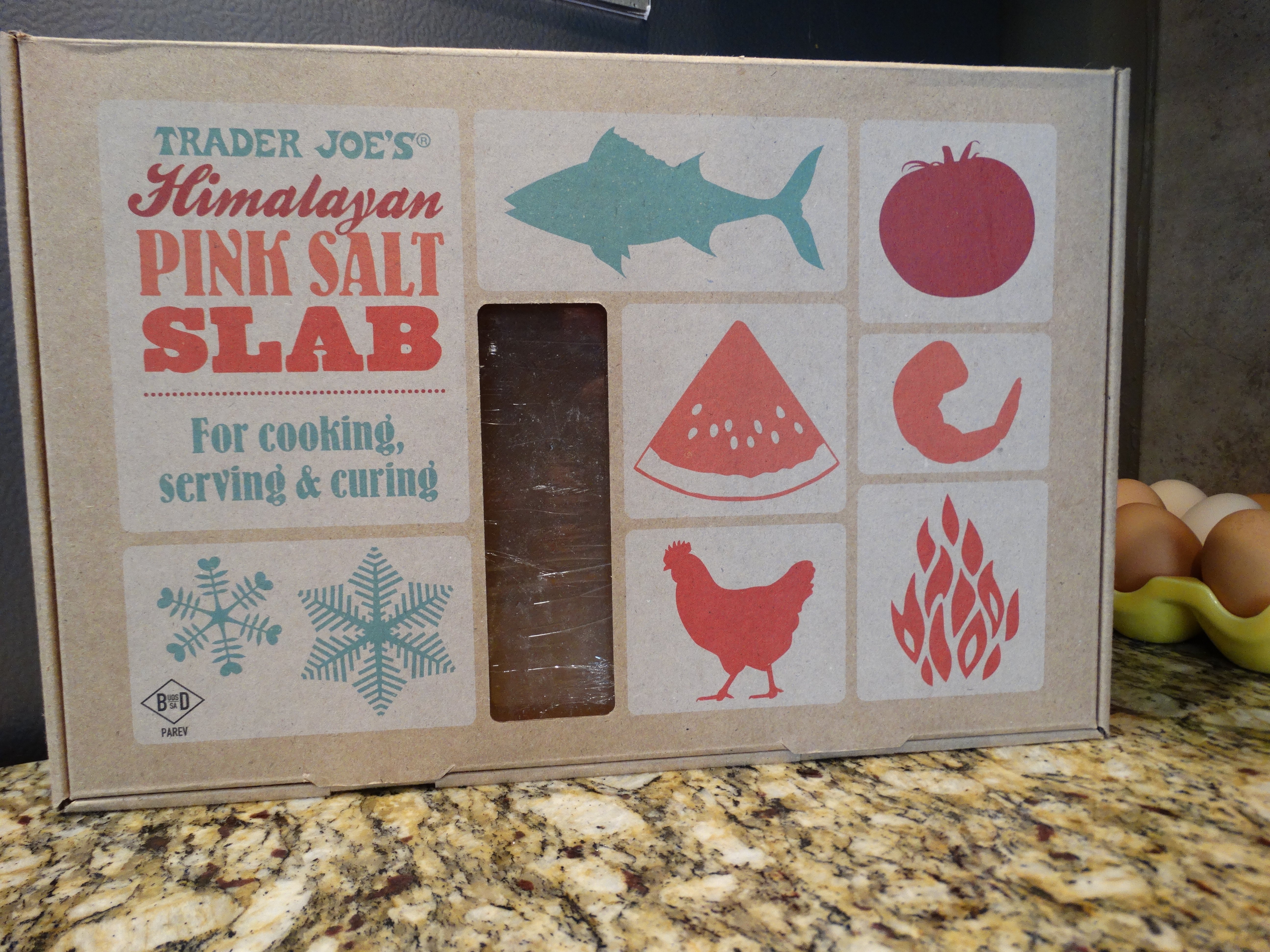
Himalayan salt comes from the natural salt deposits found in the Himalaya Mountains that sprawl through Asia from Afghanistan through Pakistan to India on into Nepal, and Tibet all the way to Burma (Myanmar). The mountains have been mined for salt since 320 B.C. we see it in supermarkets and specialty stores in a variety of ways such as fine, coarse, in grinders, mixed with other spices, as blocks and slabs, and more.
I’ve been using Himalayan Salt for the wonderful health benefits but even more so for the taste. I buy it in bulk and also in a grinder from Costco. Once I tasted Himalayan Salt I simply couldn’t go back to regular table salt. I’ve even been known to carry my own small salt shaker in my bag but I've been doing this for over a decade since I gave up table salt. You heard me right; I'm salt spoiled.
I recently shared about the benefits of heating Himalayan Salt using salt lamps and salt candle holders and now I would like to share with you the joy of using Himalayan Salt slabs in cooking as well as in serving foods. Once I started to look into using salt blocks in the kitchen, I knew I wanted to cook with one. I wanted to be able to use one on the grill.
There are so many to choose from, truly. I want to compare the two I have just a bit. Both are made of quality Himalayan salt and both should do a great job hot or cold. I'll share more as we go along. I recommend using a square slab for grilling purposes, as it fits most grills better and is easier to move around. They are pretty heavy!
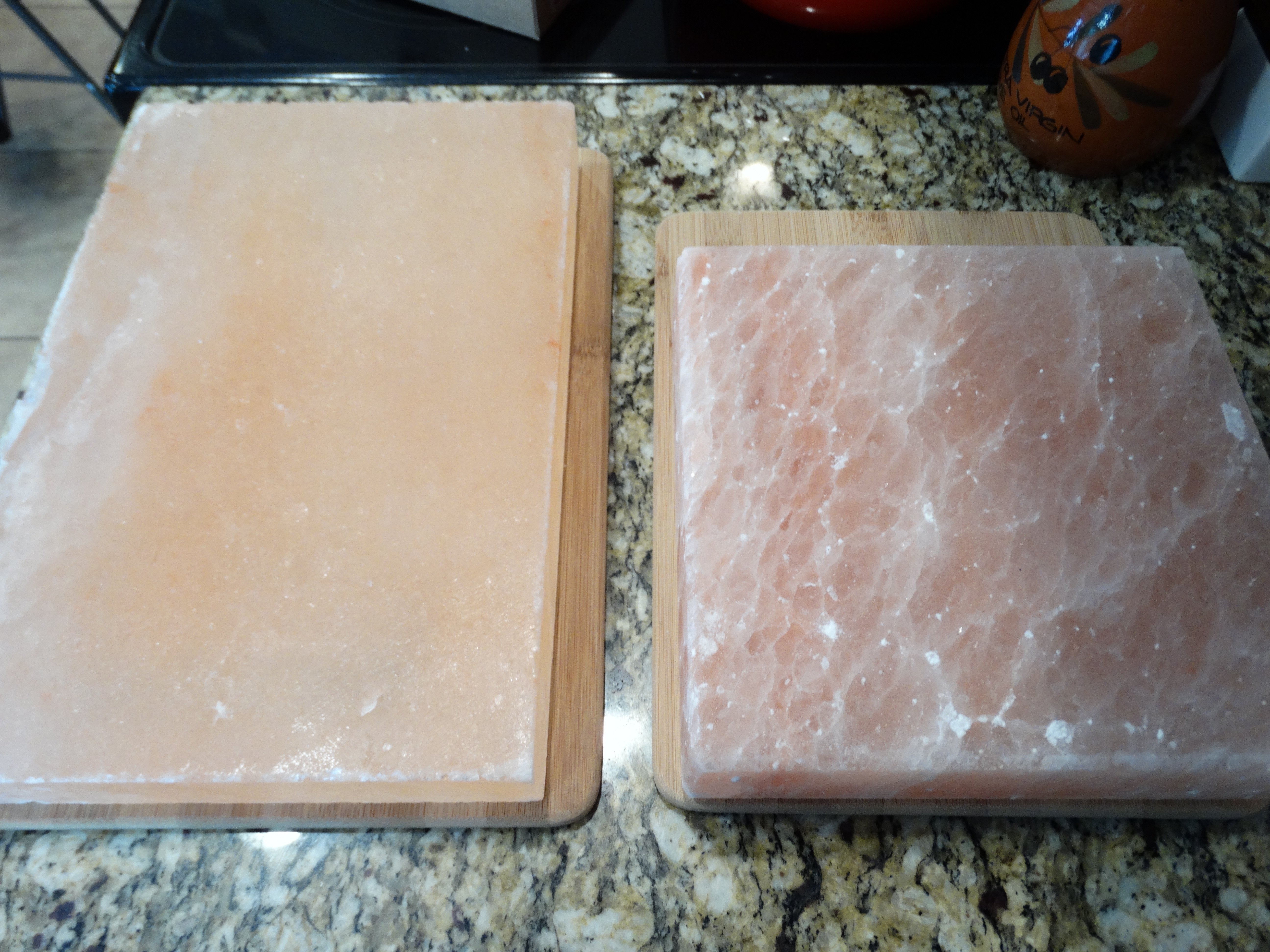
I have heard salt block cooking is all the rage on food shows as of late but I have not had the opportunity to see those shows (we don’t have regular tv). However, over the last few years, I have read several Prepper books which suggest it is a good product that keeps well and has long-term value. As I studied it more, the chef inside me said, “let’s start cooking!” So, I began searching for salt blocks and slabs for my own kitchen.
Versatile Salt Blocks
The best part is the versatility of the salt blocks. These beautiful translucent pink crystals can serve to cook, grill, sear, cure, and present chilled foods, even desserts, all while imparting the heavenly flavor of Himalayan salt to your foods. Heating sometimes can cause the salt block to change color and over time crack, but even if a block does crack, you can still use it in other ways. Here's a fairly inexpensive one that would make a great starter block.
So far, I have two blocks, one I intend to cook on and the other one for cold foods and serving on. The more uniform the color, the better for cooking according to experts. I'll be serving on the one from The Spice and Tea Exchange, slightly smaller, but more marbled. It's perfect for using it cold.
I'll be using the Trader Joe's slab for cooking. I also want to mention that the one on the left above (from Trader Joe's) was half the price of the one from The Spice and Tea Exchange. Therefore, where price is considered, Trader Joe's beats The Spice and Tea Exchange.
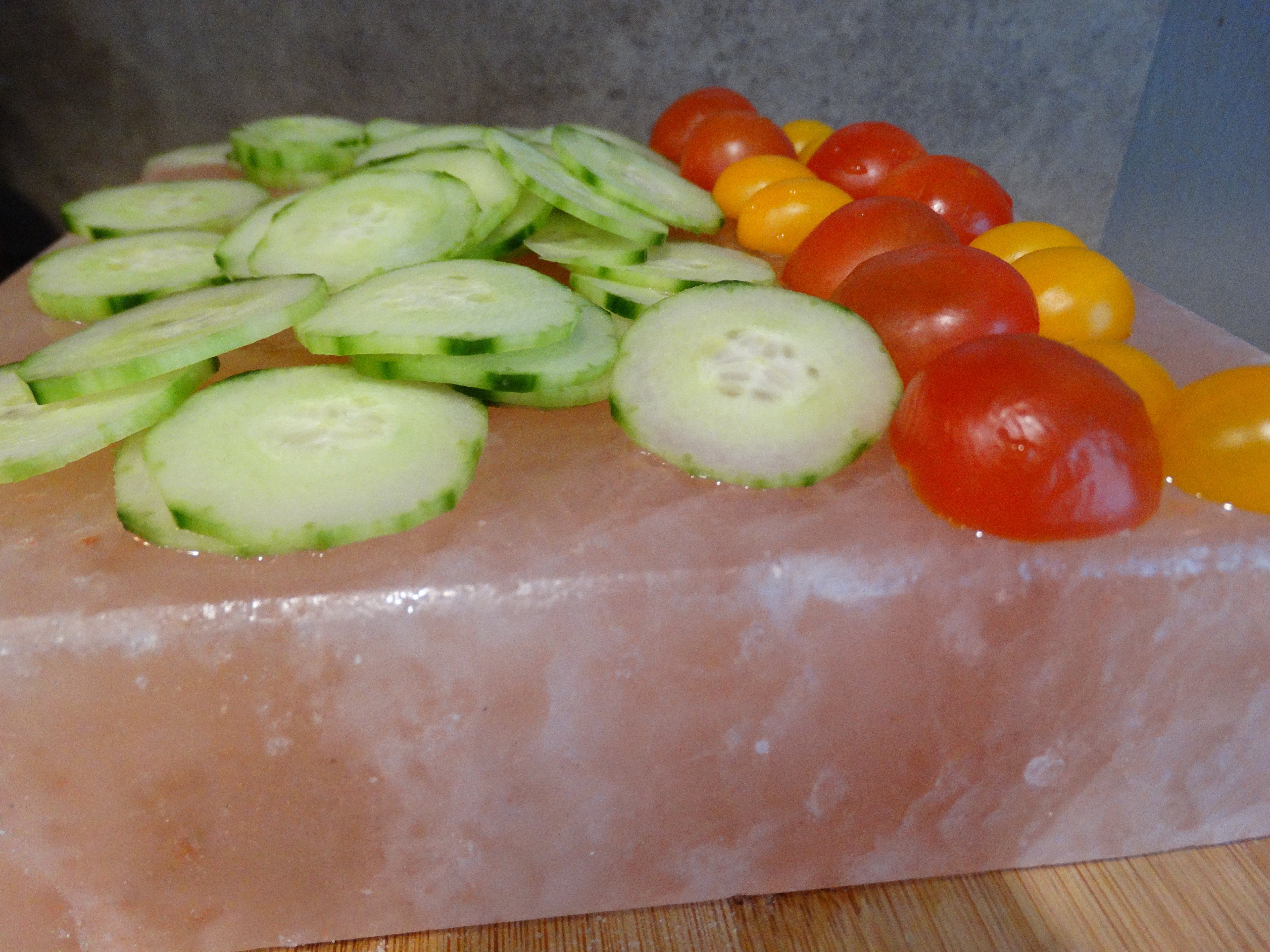
Use to Serve Foods
I originally planned to use my salt block only for chilled foods and presentations. This is simple. Just freeze the salt block for a couple of hours and arrange foods on the salt block and serve. Desserts such as fruit or even ice cream (I'm using the Trim Healthy Mama Tummy Tucking ice cream with the caramel sauce from the Pay Off Day Candies) can be served right on the salt block. I mean, who doesn’t love the combo of sweet and salty? For beauty, I really like the coloration of the block from The Spice and Tea Exchange.
Cooking with a Salt Block
Due to the composition of the Himalayan Salt Block and its heat distribution, it is able to hold the temperature for a long while, in a way similar to but exceeding a cast iron skillet. Salt blocks can be safely heated and chilled to extreme temperatures. The melting temperature of salt is said to be almost 1500 degrees Fahrenheit, but that’s just what I read, I haven’t tested that theory 😉
Before heating or using at high temperatures, it is important to make sure the block is fully dry. Allow the block to rest 24 hours between uses (another good reason to have more than one!) The first few times it is used the salt block will obtain a few small cracks and the color will become lighter. After time and washing (more on washing later) it may darken again.
I have a glass top electric range that I did not want to damage, so I have only tried mine on the grill so far. I am in search of something like a diffuser, trivet, wok ring or a metal spacer for use when heating my salt block on the stovetop. It is very important NOT to place a salt block directly on the glass top heating element as it could damage the range as well as the salt block. The same applies to other types of stoves/ranges.
I will note, however that a gas range, gas stove or gas grills are excellent for use with salt blocks.
Always heat the salt block slowly, starting on low heat. As the block heats, you may see some moisture along the edges of the block and that’s ok. This moisture will evaporate as it heats. Remember, slow and steady wins the race. Increase heat slowly if a higher temperature is desired. Raising the temperature every 5-10 minutes until the desired temperature is reached. The cooking surface will be ready when a few drops of water sizzle.
Salt Block Cooking
To test the temperature of the salt block, just drip some water onto the surface of the block to see how vigorously the water droplets sizzle. With time, you will gain experience, but if it sizzles away quickly it should be plenty hot.
For a charcoal grill, you should move the coals to one side and place the block on the opposite side to allow it to heat slowly on indirect heat. With gas, just start out on the lowest setting and slowly increase (same with a gas stovetop/range). Oven use recommendations vary. If you do use yours in the oven, it is important to temper it first by heating it on the stovetop or grill before using it in the oven.
I have found several articles describing how to use a salt block in the oven. Here's how to safely use your salt block in the oven. Watch me cook on my salt block in this video.
Once you get the hang of it, you may want to try the cookie recipe linked at the bottom of this post. I believe it would be especially good with caramel, chocolate, almonds, or brownies!
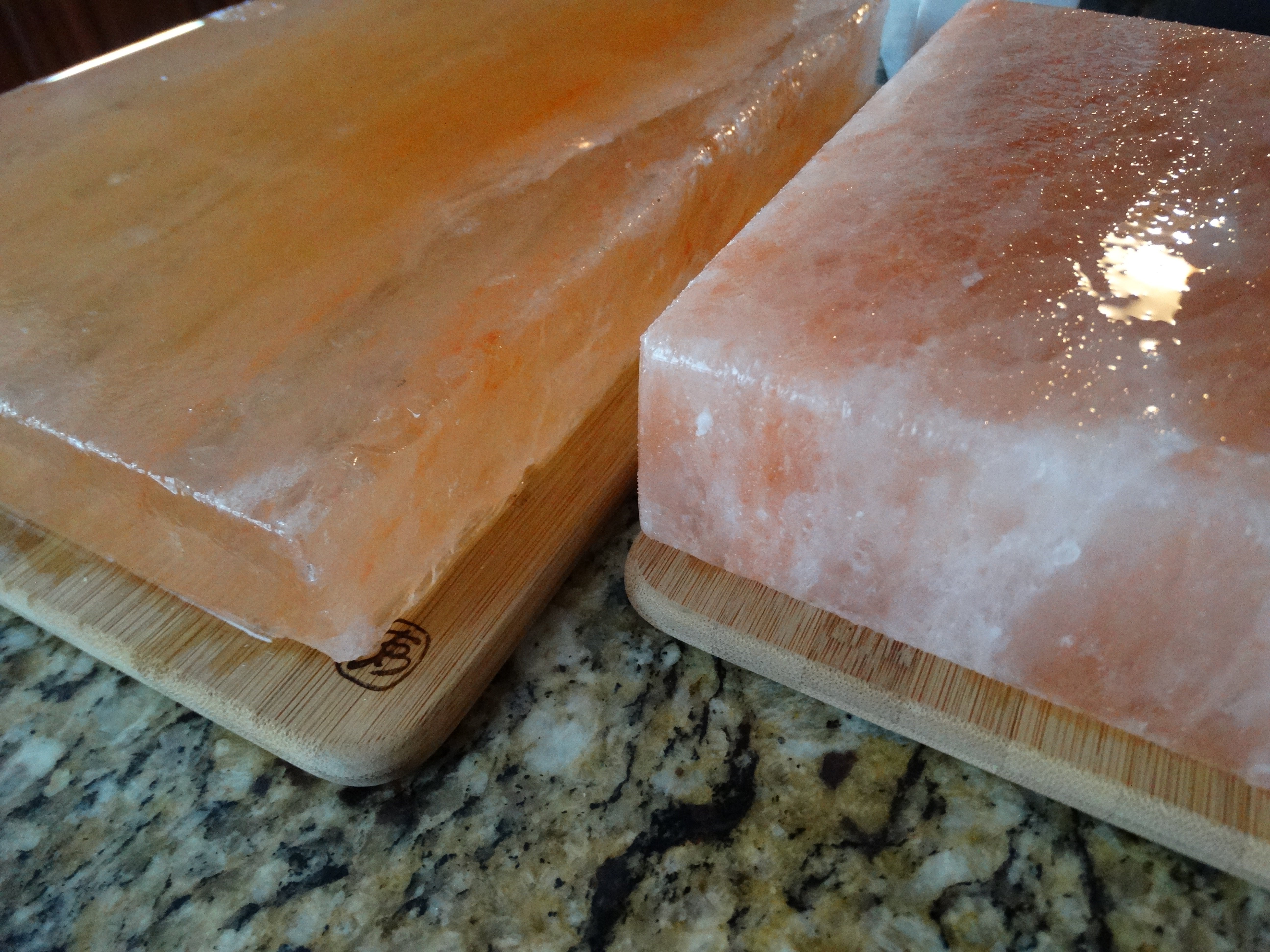
Caring for a Salt Block
Take care when handling your salt block. Try to lift with even pressure. I move mine on some light bamboo cutting boards. Some salt blocks come with a holder such as this one which reduces the risk of breaking from too much pressure on one area.
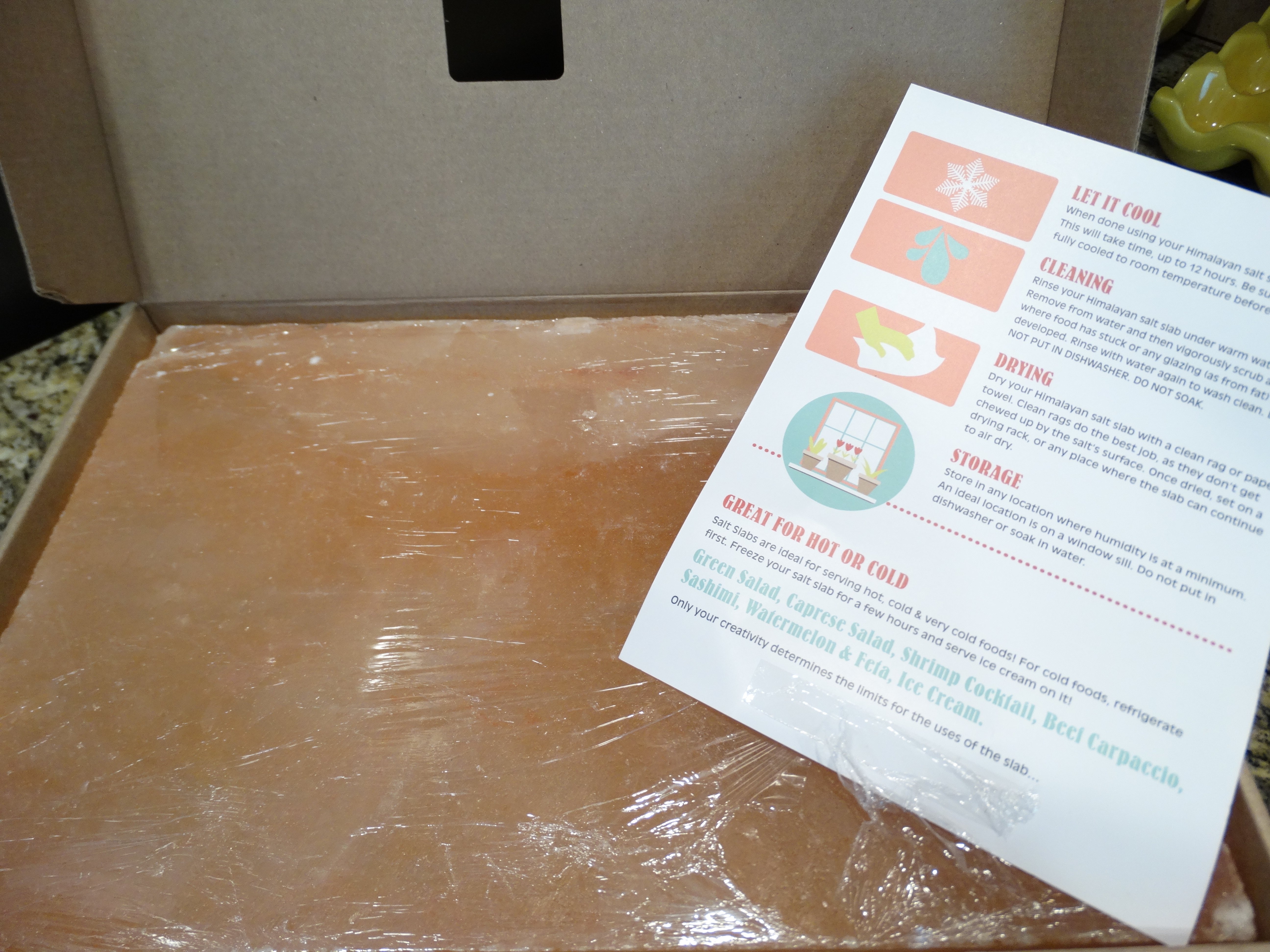
The Spice and Tea Exchange salt block had a very small “care instructions” card attached to a canvas carrying case (pretty nice) and the one from Trader Joe's had a full care instruction sheet, it came in an attractive box. I compared the two sets of instructions I had with several dedicated salt block retailers to find the most common recommendations.
How to Care for a Himalayan Salt Block
- Use one side for the top and one for the bottom (to make it last longer)
- Heat slowly (you can preheat the oven and the salt block simultaneously)
- Use caution, protect hands, remember salt blocks retain heat for a LONG time. Invest in a rack to carry the block on. (one website even recommended leather gloves and I found these high heat gloves as well)
- Rinse, don’t wash – don't use soap
- Air-dry on a damp cloth
- Use often (practice!)
- Oil is not necessary
- Fast cooking foods are best
If you use a paper towel to dry the salt block, don't leave it sitting on a paper towel unless you want bits to stick. I prefer to use cloth.
Cooling and storing
After you use the salt block it’s necessary to allow it to completely cool before you clean it. When cool, simply moisten the block with a clean damp sponge, maybe keep one sponge designated for your salt block only? I am using a loofah purchased at our local Farmer's Market for mine. You can scrub with a soft brush or the green scouring pads to remove stuck-on foods. Also, there is a tool you can use to clean and scrape your block with. The last step is to dry the block and store it in a dry place, preferably use a drying rack.
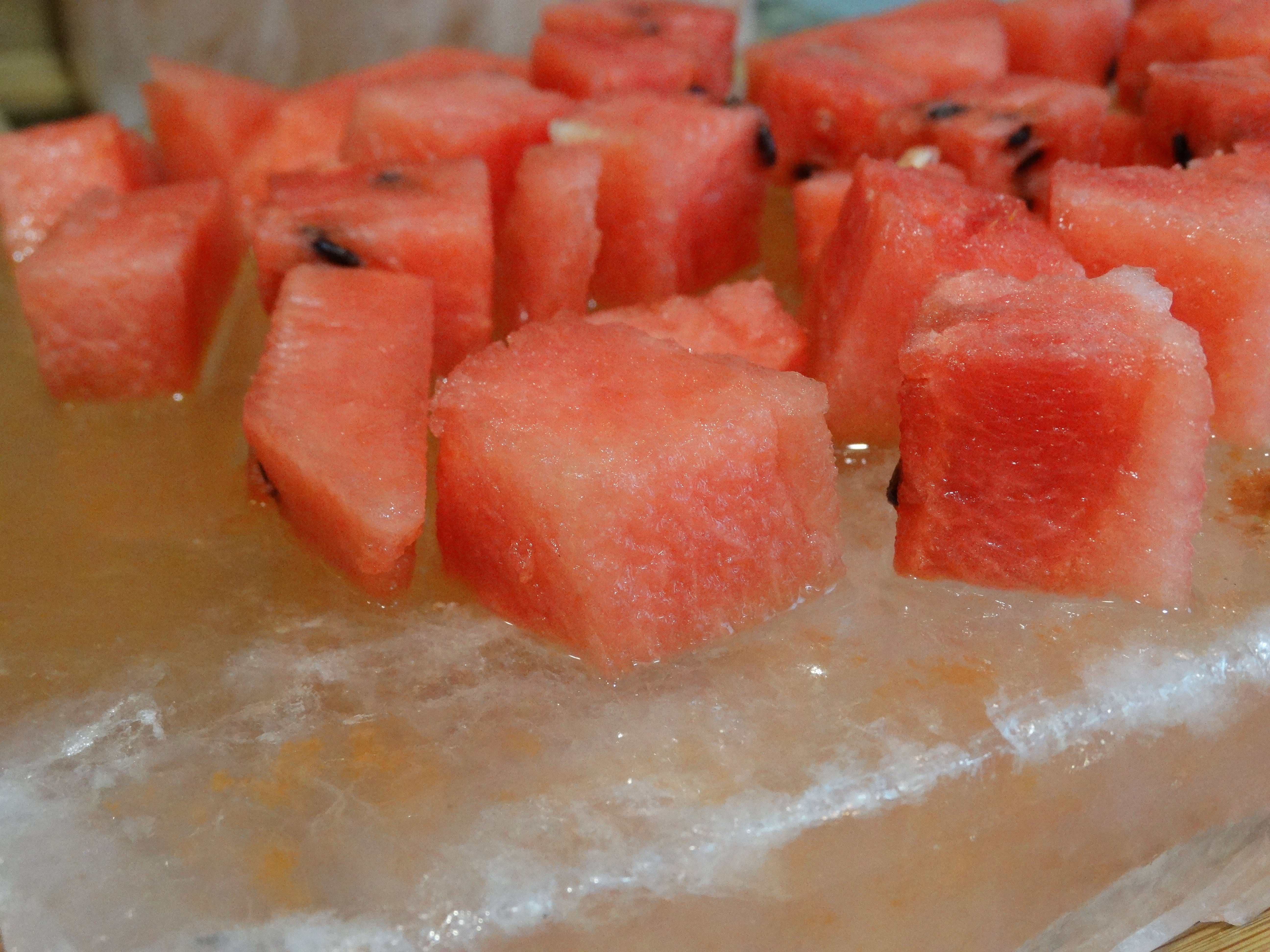
Never use soap, detergent, or cleansers on your salt block or put it in the dishwasher. The salt block has powerful antimicrobial properties and thus soapy cleaning is not necessary and can change the taste of your salt block or even destroy it. I noticed the surface of the Trader Joe’s slab was very smooth with only a few chips around the edges, but the Spice block was kind of rough all over the surface. Both rinsed well after use.
To watch a video on how to care for Salt Slabs, Blocks, Plates just click HERE. And one more tip: I spoke to one person who said because she did not have central heat and air, she kept her salt block in the fridge, otherwise it was sweating all the time and staying moist. Just sayin’
The Wonderful Salt Block Benefits
Does this seem like a lot of caution and work just to salt your food? Well, stick with me, because it’s about more than just salting your food. Plus, it’s fun and gives you a good reason to add another cookbook to your collection. I prefer to hold cookbooks in my hands but you can get a couple of good ones on Kindle as well, such as Salted: A Manifesto on the World's Most Essential Mineral or Salt Block Cooking (click picture to peek inside the book).
Why Use Himalayan Salt at all?
Himalayan pink salt is my personal favorite salt. I think it tastes better than table salt. The trace minerals are not really that high but it's enough over time to make a small difference in your mineral intake. But the real reason it's better than table salt is that table salt is refined and contains about 97 to 99 percent sodium chloride. In addition, the anticaking agent sodium aluminosilicate is added to make table salt flow better. In addition, table salt contains potassium iodide.
The pinkish hue comes from the minerals contained inside the salt. Most pink salt is labeled Himalayan Pink Salt and mostly comes from salt mines in Khewra, Pakistan. Let's face it Himalayan Sea Salt is easier to say.
When you cook on a salt block it adds healthy minerals like potassium and magnesium to your foods. Contains a minimum of 84 naturally occurring trace elements.
- When you cook on a salt block it adds healthy minerals to your foods. Contains a minimum of 84 naturally occurring trace elements
- Promotes healthy water distribution in the body
- Promotes a healthy pH balance
- Prevents muscle cramping
- Helps with the absorption of nutrients in food
- Promotes healthy blood sugar balance
- Naturally promotes sleep
- Promotes longevity
- Essential for brain growth and neurological function
- Essential for good adrenal function
Recipes & Suggestions
Appetizers, desserts, veggies, searing meat, adding saltiness to watermelon or tomatoes, the uses for a salt plate or Himalayan serving platter are endless! I like to use my salt block best with serving cold foods, and of course my favorite way is for serving sushi and sashimi!
COLD
- Cucumbers, radishes, bell peppers, and cherry tomatoes taste amazing after a few minutes on the salt slab
- Sushi Grade Salmon (sashimi)
- Sushi rolls
- Watermelon (my kids did not like this but I LOVED it… add feta for a real treat)
- Apples with caramel
- Bananas
- Ice Cream
- Chocolate Bark (see video linked at the bottom of this post)
Yes, you can cook food on your salt block, check out the recipes below. When cooking meat, always check for doneness. Himalayan Salt Block Cooking is so rewarding! You're not going to want to eliminate your cookware, but you may find yourself setting it aside on occasion to prepare a statement dish.
HOT
- Seared Shrimp
- Scallops
- Salt Block Salmon
- Eggs
- Lemon Pepper Chicken Kabobs
- Steak
- Salt Block Roasted Bone Marrow
- Chocolate Chip Cookies
- BBQ Chicken and more
To use your salt block in the oven safely, the first time follow these steps for tempering:
- Place the clean and completely dry salt block in the oven on a lower (but not lowest) rack, place rack with a baking sheet on the rack below to catch any drippings. (if you’re cooking on it)
- Turn oven on to the lowest temperature and let warm for about 30 minutes.
- Increase the oven temperature by 50 degrees every 20-30 minutes until you reach 550 degrees Fahrenheit.
- Allow salt block to remain at the high temperature for half an hour, then turn off the oven. Leaving the door closed, allow the salt block to come back to room temperature.
- The salt block is now ready to be used for cooking.
Anytime you prepare to use your salt block for cooking, increase the temperature gradually. Although, as you use it you can increase the temperature in smaller increments. I usually raise the oven temp about every 5-7 minutes until it reaches the desired temperature.
You may hear some crackly sounds in the oven while your salt block is heating the first time. This is normal and it should not be a problem. (Your salt block probably came with instructions, refer to those for care and usage instructions.) Salt Block Salmon
Next on my wish list is the mortar and pestle of Himalayan Salt and Himalayan Shot Glasses!


In the end, if I had to choose only one, I would go with the one from Trader Joe's, mainly because the price was so much better and the color more consistent which is apparently better for cooking. Although, I'll probably add to my collection from Amazon as the selection is pretty good. If you are wondering as I did, if Himalayan Salt is sustainable, it is, but you could read up on it here.
Disclaimer: Pets need to be kept away from salt blocks and salt lamps as they could lick them and get very sick. Just let onions and garlic can make cats and dogs sick, so please take precautions with fur babies. Also, if you begin to see large fissures in your salt block, take care when heating.

Here's a delicious way to use your Himalayan Salt Block
Chocolate bark is a holiday favorite, but you can make it any time of the year!

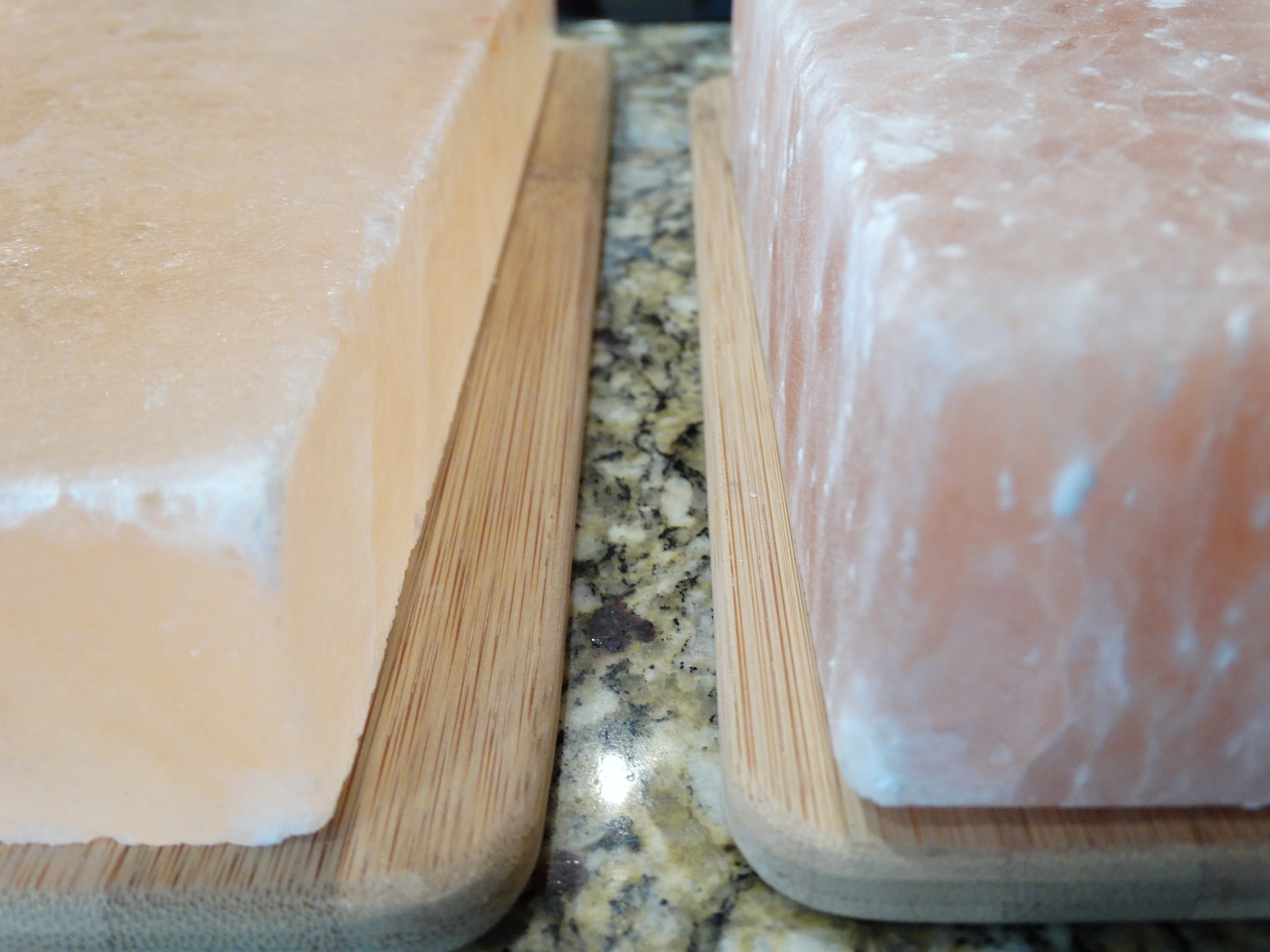
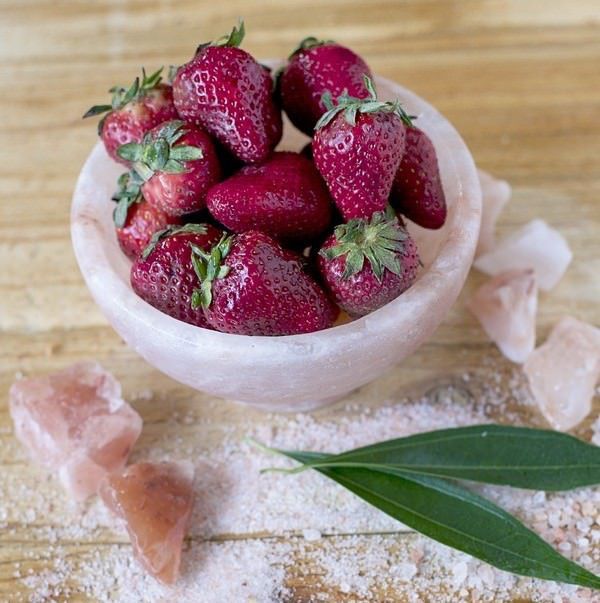
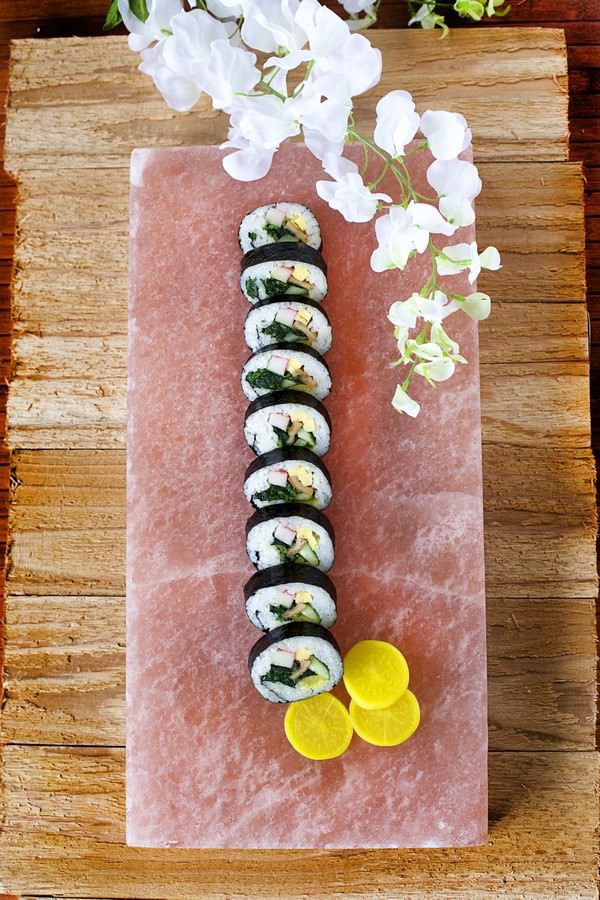
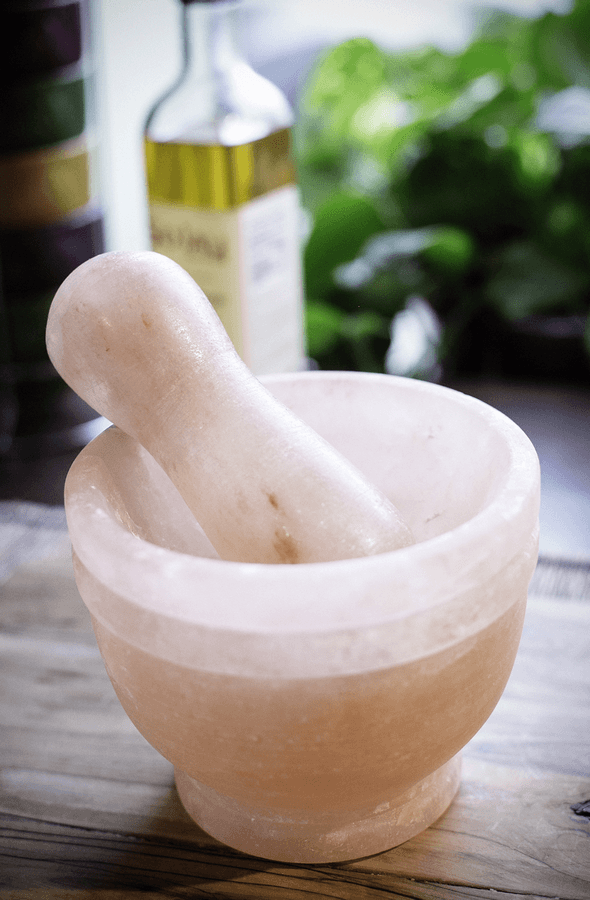




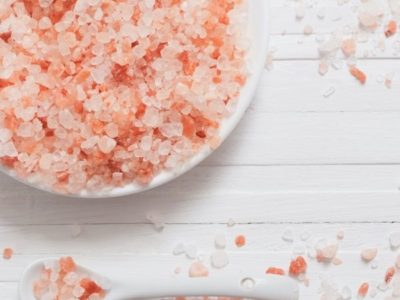
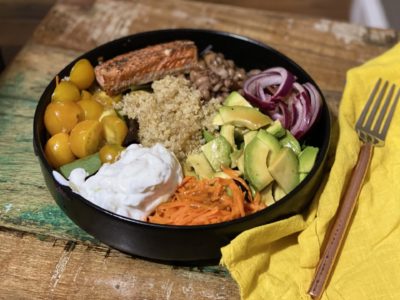
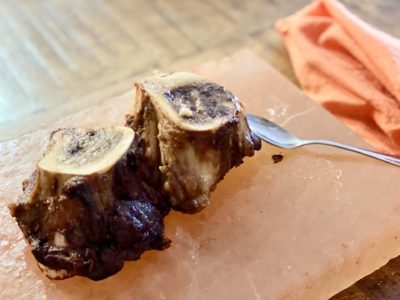
![Divine Salted Chocolate Bark [Salt Block Series]](https://www.thatorganicmom.com/wp-content/uploads/2020/12/divine-salted-chocolate-bark-salt-block-series-400x300.jpg)
 How to create natural spa products at home
How to create natural spa products at home
Thanks for the primer! We just inherited a TJ’s salt block that I had given to my dad, and I think he never used. So now it is our turn to try it out!
Awesome! Enjoy! I’d love to hear about what you make with yours! Thanks for stopping by!
All the best,
Rebecca
This was really helpful! Thanks for taking the time to explain, for all of the novices (like me). I noticed the blocks this year at TJ’s, but had NO IDEA what on earth they were or how to use it properly. I’ll routinely check this site for your tips and recipes.
MS
Yeah, I was so excited to find them at Trader Joe’s for such a great price. Everywhere I’ve ever seen them they were really expensive. I hope you were able to grab one and try it out! Thanks for reading and I’m glad you took the time to comment!
Rebecca